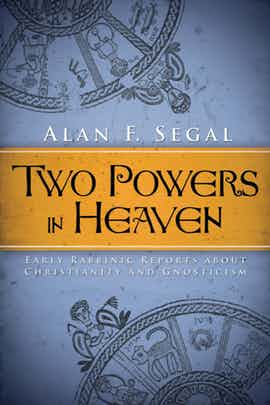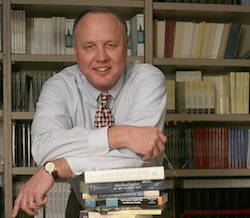One God, One Lord (Part 10)
Two of the major influences on Larry Hurtado’s work were a book and a friendship. The book was Alan Segal’s classic Two Powers in Heaven: Early Rabbinic Reports about Christianity and Gnosticism (SJLA, 25; Leiden: E. J. Brill, 1977). The book has been re-published twice to my knowledge, most recently by Baylor University Press (2012). Segal examined the rabbinic sources about early manifestations of what is called the “two powers” heresy in Judaism. Certain rabbis condemned these “heretics” (minim) who appear to be reverencing two deities, therefore violating one of the basic tenets of Jewish monotheism. Segal’s work is useful for understanding the complex interactions among Jews, Christians and Gnostics in the centuries that followed Jesus’ execution. Some of the Jewish heretics condemned may have been Jewish Christians. But as Hurtado noted, something more than beliefs about Jesus are being challenged; likely it had to do with the Jewish Christian propensity of reverencing Jesus in ways later rabbis deemed blasphemous. 
The other influence was the friendship that struck up between Alan and Larry over the next few years. Alan endorsed the first edition of One God, One Lord (1988) and the second (1998). Alan and Larry came from two different worlds, but they became fast and good friends. Alan was a Jewish New Testament scholar from the Northeast. Larry was a Christian New Testament scholar from the Midwest, who loved Canada and his adopted home in the UK. They had much in common and much in difference, but the differences were made sweeter over time as they spent time together at professional meetings and in Larry’s and Shannon’s Edinburgh home.
Both Alan and Larry were founding members of the Early High Christology Club (along with Carey Newman and David Capes). In a future post, I’ll share the founding myth of the club.
In 2007 colleagues conspired to produce a Festchrift in honor of them both (Israel’s God and Rebecca’s Children: Christology and Community in Early Judaism and Christianity, Essays in Honor of Larry W. Hurtado and Alan F. Segal, eds. David B. Capes, April D. DeConick, Helen K. Bond and Troy A. Miller [Waco, TX: Baylor University, 2007]). Each were told they were writing an essay for the other in the others’ Festschrift. They didn’t know it was a joint Festschrift until the reveal in San Diego in 2007. When they realized what was happening, it was a great moment.
When Alan became “unwell” a few years later, we were all glad we had not waited a few years before we honored them with this volume. Carey, Larry and I flew to New York a few weeks before Alan died to visit him in the hospital near his home. As with all good friends, his death left a hole in our lives. We miss Alan, his quirky sense of humor and ability to order food in 21 languages, and now we miss his friend.


 man, a NT scholar in his own right, has looked over the past forty years at some of the most interesting and influential books published on the earliest Christian assessments of Jesus’ significance. In part these books have contributed to the emerging consensus that an early high Christology originated in the first years or decades of the Jesus movement, most likely in a Jewish context. Carey Newman has taken Baylor University Press from obscurity to become one of the most important university presses in North America.
man, a NT scholar in his own right, has looked over the past forty years at some of the most interesting and influential books published on the earliest Christian assessments of Jesus’ significance. In part these books have contributed to the emerging consensus that an early high Christology originated in the first years or decades of the Jesus movement, most likely in a Jewish context. Carey Newman has taken Baylor University Press from obscurity to become one of the most important university presses in North America.
You must be logged in to post a comment.